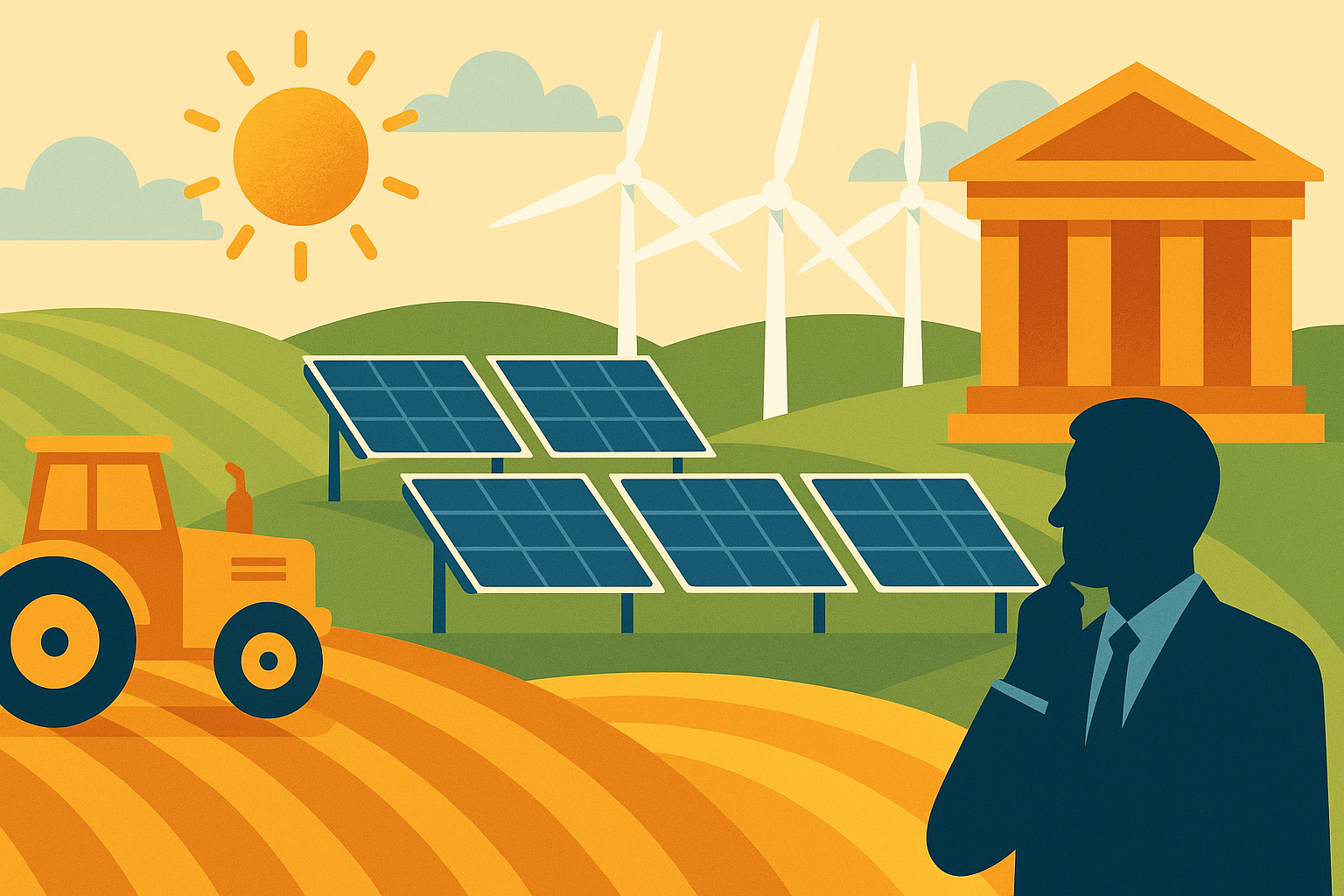The European Union is turning to an unusual source of inspiration for its latest energy strategy: agriculture. Drawing from Denmark’s pioneering tripartite agreement on farming emissions, Brussels is now pushing for three-way contracts to lower energy costs, accelerate clean energy deployment, and strengthen industrial competitiveness.
The Tripartite Energy Model
The European Commission’s proposal centres on agreements involving three parties:
- Industry, which would commit to buying a set volume of clean energy.
- Renewable developers, who would commit to building the capacity.
- Governments and public institutions, tasked with providing regulatory certainty and financial incentives.
These tripartite contracts could be tailored by sector or project, spanning technologies such as wind, solar, biogas, and energy storage. The aim is to reduce uncertainty, foster investment, and bring energy producers and consumers together under a framework of stability.
The concept will be formally discussed in Copenhagen, where EU energy ministers will tour the Avedøre Power Station, a combined heat and power plant operated by Denmark’s Ørsted.
Inspiration from Denmark’s Green Farming Deal
The idea originates from Denmark’s “Green Tripartite Agreement”, a world-first accord struck in June 2023 between government, agriculture, and environmental groups to tax livestock emissions. The deal sought to reduce emissions, protect nature, and still deliver growth for farming.
According to Danish minister Jeppe Bruus, the negotiations were “very difficult” but created accountability across all sectors. Importantly, it forced the government into a hands-on role, ensuring agreements translated into concrete action — a model Brussels now hopes to replicate in the energy sector.
Potential Benefits
EU energy commissioner Dan Jørgensen, who first floated the idea earlier this year, argues that such collaboration could make energy cheaper and more reliable, while boosting competitiveness. If fully implemented, the Commission estimates the plan could cut the bloc’s fossil fuel bill by €130bn annually by 2030.
Industry stakeholders are cautiously supportive. Giles Dickson, CEO of WindEurope, said that while energy producers want to expand and industrial consumers want more clean energy, aligning costs remains difficult. Governments, he argued, could bridge this gap by actively backing tripartite arrangements and streamlining project approvals.
Challenges and Skepticism
Not all industries are convinced. Axel Eggert, director-general of the European steel association Eurofer, warned that tinkering with contracts does not address Europe’s fundamental problem: its marginal pricing system, where electricity costs are set by the most expensive source, often gas.
Others point to the risk of hidden costs. Bram Claeys, senior adviser at the Regulatory Assistance Project, said tripartite contracts could be effective tools to reduce investment risks but may shift the financial burden onto citizens or taxpayers. “Grids still have to be paid for, or risks still borne by someone,” he noted, calling for transparency, fairness, and democratic oversight.
A Broader Context
The EU’s proactive stance stands in sharp contrast to the United States, where President Donald Trump’s administration has cast uncertainty over offshore wind development. Last week, Danish renewables giant Ørsted suffered share price declines after Washington ordered a halt on its nearly completed Revolution Wind project, citing national security concerns.
While European leaders are looking to strengthen clean energy support through innovative contracts, investors in the US are bracing for the possibility of stalled or cancelled projects, underscoring the diverging policy landscapes.








